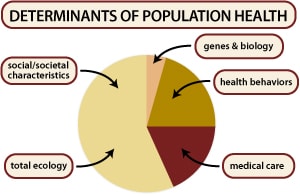[ITEM]

 [/ITEM]
[/ITEM]


THIS article will review relationships between policy, practice, and research in social care and health services for older people in the United Kingdom over the past 25 years. First, it is important to acknowledge that these relationships are played out in a wider context of social and economic change within which there are enduring, as well as more transient, issues that impact on attempts to change, or implement, policy or practice.
ASSIGNMENT 1 EXPLORE COMMUNICATION SKILLS & THE VARIOUS FACTORS WHICH INFLUENCE THE COMMUNICATION PROCESS UNIT 1: COMMUNICATING IN HEALTH AND SOCIAL CARE ORGANISATIONS CATHERINE CARLIN Contents Introduction 3 1.1 4 1.3 8 1.4 9 2.1 12 Conclusion 14 Introduction In this assignment the writer is going to focus on how communication is important in health and social care settings.
Before turning to the more detailed policy history, I will briefly explore the bigger picture and set out a general perspective on relationships between research, policy, and practice. Demographic, economic, and social factors influence the political prominence of the issue of services for older people and the level and type of resources available to tackle problems. Projected substantial increases in the numbers of people aged older than 75 and 85 years combined with age-related morbidity are undoubtedly factors that keep older people on the agenda of policy makers. Microsoft-windows-security-spp the software protection service has stopped. Currently, services for older people represent 40% of the (National Health Service; NHS) budget and just under 50% of the social care budget (spent through local authorities) (). Broader factors that affect the demand for and the supply of assistance are not necessarily amenable to control by policy makers. Wider economic factors constrain total state spending, as well as affecting the resources available to individuals and their families to purchase assistance in old age.

Changing patterns of employment affect not only retirement and pension arrangements, but also, for example, the availability of informal care, and the character of local labor markets that provide many formal care workers. Social changes are important, too: increases in divorce and remarriage and increases in the number of children born outside marriage mean a growth in reconstituted families. Children may have several parent and grandparent figures, and family obligations—already complicated—will become less clear-cut and more difficult to negotiate (). Cultural diversity means differing relationships and expectations within extended families. Service systems will have to adjust and keep changing. Two enduring issues have continued to be contested through the past 20 years of policy and practice. These are (i) the appropriate balance of responsibilities between the individual, families, the state, and the market; and (ii) the tension between central control and local discretion.
- Author: admin
- Category: Category

THIS article will review relationships between policy, practice, and research in social care and health services for older people in the United Kingdom over the past 25 years. First, it is important to acknowledge that these relationships are played out in a wider context of social and economic change within which there are enduring, as well as more transient, issues that impact on attempts to change, or implement, policy or practice.
ASSIGNMENT 1 EXPLORE COMMUNICATION SKILLS & THE VARIOUS FACTORS WHICH INFLUENCE THE COMMUNICATION PROCESS UNIT 1: COMMUNICATING IN HEALTH AND SOCIAL CARE ORGANISATIONS CATHERINE CARLIN Contents Introduction 3 1.1 4 1.3 8 1.4 9 2.1 12 Conclusion 14 Introduction In this assignment the writer is going to focus on how communication is important in health and social care settings.
Before turning to the more detailed policy history, I will briefly explore the bigger picture and set out a general perspective on relationships between research, policy, and practice. Demographic, economic, and social factors influence the political prominence of the issue of services for older people and the level and type of resources available to tackle problems. Projected substantial increases in the numbers of people aged older than 75 and 85 years combined with age-related morbidity are undoubtedly factors that keep older people on the agenda of policy makers. Microsoft-windows-security-spp the software protection service has stopped. Currently, services for older people represent 40% of the (National Health Service; NHS) budget and just under 50% of the social care budget (spent through local authorities) (). Broader factors that affect the demand for and the supply of assistance are not necessarily amenable to control by policy makers. Wider economic factors constrain total state spending, as well as affecting the resources available to individuals and their families to purchase assistance in old age.

Changing patterns of employment affect not only retirement and pension arrangements, but also, for example, the availability of informal care, and the character of local labor markets that provide many formal care workers. Social changes are important, too: increases in divorce and remarriage and increases in the number of children born outside marriage mean a growth in reconstituted families. Children may have several parent and grandparent figures, and family obligations—already complicated—will become less clear-cut and more difficult to negotiate (). Cultural diversity means differing relationships and expectations within extended families. Service systems will have to adjust and keep changing. Two enduring issues have continued to be contested through the past 20 years of policy and practice. These are (i) the appropriate balance of responsibilities between the individual, families, the state, and the market; and (ii) the tension between central control and local discretion.